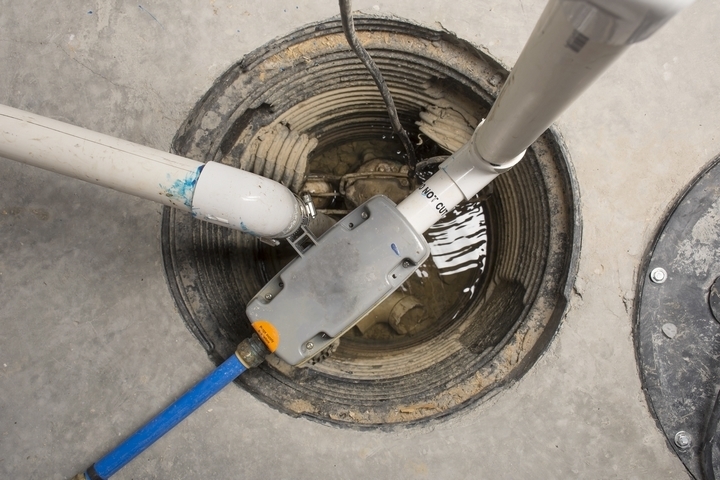Waking up to a flooded basement is a horror that can completely change the course of your day. When this happens, you quickly understand the importance of equipping your home with a reliable sump pump.
There are different types of sump pumps on the market. To understand the difference between them and buy the appropriate one, it’s good to know about the different types of sump pumps.
Here are six types of sump pumps and their uses:
Type #1: Submersible Sump Pumps
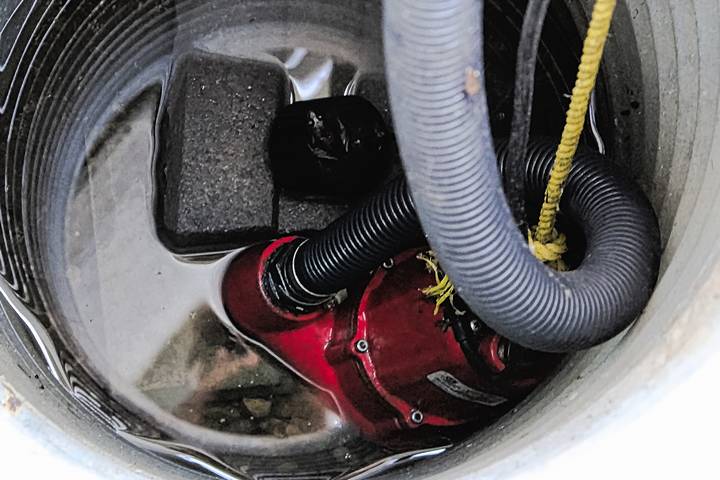 A submersible pump is immersed completely inside the sump pit. As a result, they save space and make your basement more visually appealing, unlike other pumps that stick out. They feature a high power motor with the ability to pump thousands of gallons of water per hour.
A submersible pump is immersed completely inside the sump pit. As a result, they save space and make your basement more visually appealing, unlike other pumps that stick out. They feature a high power motor with the ability to pump thousands of gallons of water per hour.
Immediately when the pump detects water, the motor begins to run. It pumps the water out, then it shuts off once the work is complete. These pumps are especially appropriate for areas that experience heavy rainfall. They also have a filter to filter out debris. This can further prevent flooding, which is often caused by clogging.
Submersible sump pumps are more expensive than other pumps. Unfortunately, they also have a short life expectancy, which is about five to ten years. Besides, their motor can be easily damaged if there are leaks. Servicing or repairing these pumps can be very challenging since they’re not easily accessible.
Type #2: Water-powered Sump Pumps
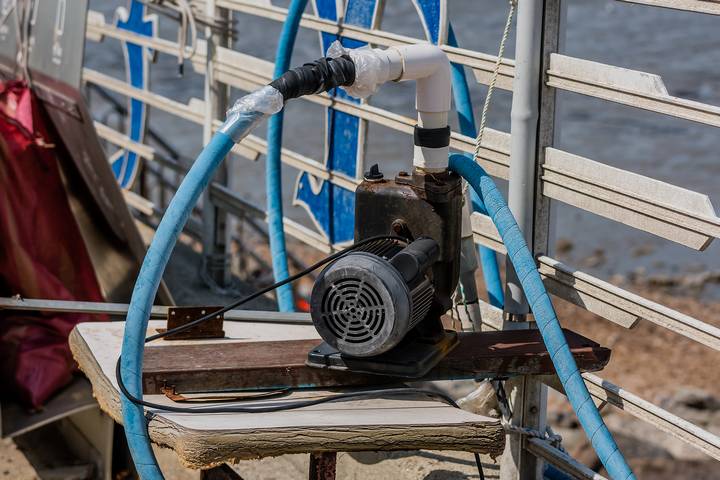 These pumps are less popular. They are, however, unique. They use water pressure from the municipal water source, which creates a vacuum, sucking water from the sump pit.
These pumps are less popular. They are, however, unique. They use water pressure from the municipal water source, which creates a vacuum, sucking water from the sump pit.
Since they don’t rely on electricity to operate, water-powered sump pumps are very handy, especially in case of a power outage. However, you require city water with high pressure. This is because low water pressure compromises the efficiency of the pump.
Water-powered sump pumps are used as a backup for other sump pumps in case of a power outage. These pumps have no motor, battery, or moving parts. They also don’t require maintenance. As a result, they have a long lifespan.
It’s pricy to run this pump since you have to pay for the excess water needed to create pressure for the pump to empty the sump pit, so it should only be used in emergencies.
Type #3: Pedestal Sump Pumps
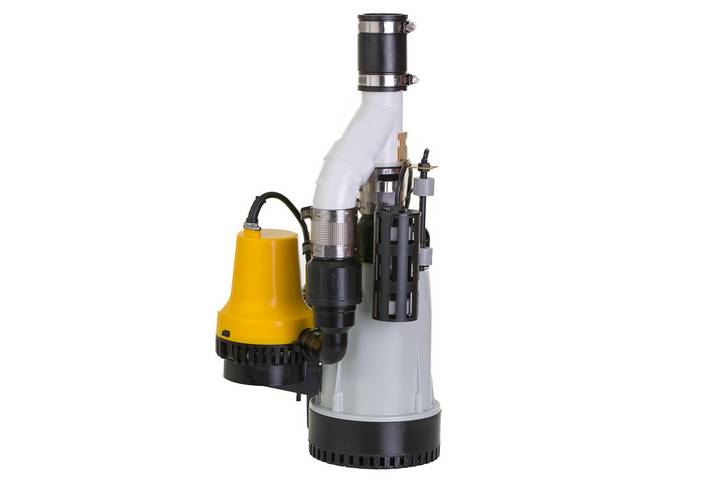 Pedestal sump pumps are also known as upright pumps. They have an exterior motor, which is supported on a column attached to the casing of the pump. The motor is raised above the sump pit to keep it from coming into contact with water, while an extension of the shaft reaches down the pit. This makes it easy to access the motor whenever you need to repair or replace it. This way, it’s less likely to suffer water damage.
Pedestal sump pumps are also known as upright pumps. They have an exterior motor, which is supported on a column attached to the casing of the pump. The motor is raised above the sump pit to keep it from coming into contact with water, while an extension of the shaft reaches down the pit. This makes it easy to access the motor whenever you need to repair or replace it. This way, it’s less likely to suffer water damage.
A pedestal sump pump can last for about 25 to 30 years. These pumps have a relatively high horsepower but are less powerful and noisier compared to submersible pumps. They’re ideal for small pits that don’t have enough space for the pump and its piping.
Due to the amount of power pedestal sump pumps produce, they can’t move large volumes of water. This might be a problem for a low-level property.
Type #4: Battery Backup Sump Pumps
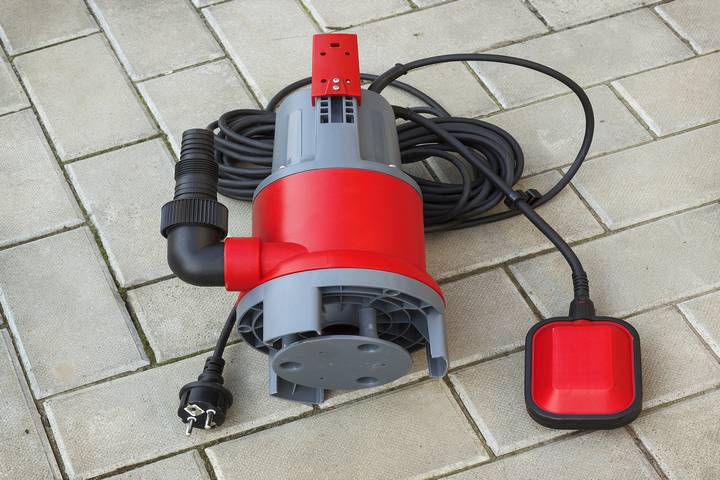 Like water-powered sump pumps, battery backup pumps are a lifesaver whenever there’s a power blackout. While these pumps are electric, they feature a stored battery for powering them in case the power goes out.
Like water-powered sump pumps, battery backup pumps are a lifesaver whenever there’s a power blackout. While these pumps are electric, they feature a stored battery for powering them in case the power goes out.
A battery backup sump pump is basically a submersible pump with a battery inside its case. While some backup units are solely battery-powered, others are regular submersible pumps with a separate battery backup pump that comes into play whenever the power goes out.
In a small sump pit, a battery-backup sump pump is easier to fit. One important thing to note about battery backup pumps is that they are less powerful. This is due to the fact that a battery doesn’t have the capacity to produce the same power as the main electricity supply.
Don’t expect a battery backup pump to perform the duties of the main sump pump. It’s just a backup system. During a storm, the main power supply will most likely go out. When this happens, this sump pump will make all the difference in keeping the house dry.
Typically, a battery backup sump pump can continue pumping away water from a sump pit for 12 hours without needing a recharge. It also features an alarm that alert the homeowner the moment it has to take over the duties of the primary pump.
Type #5: Effluent Pumps
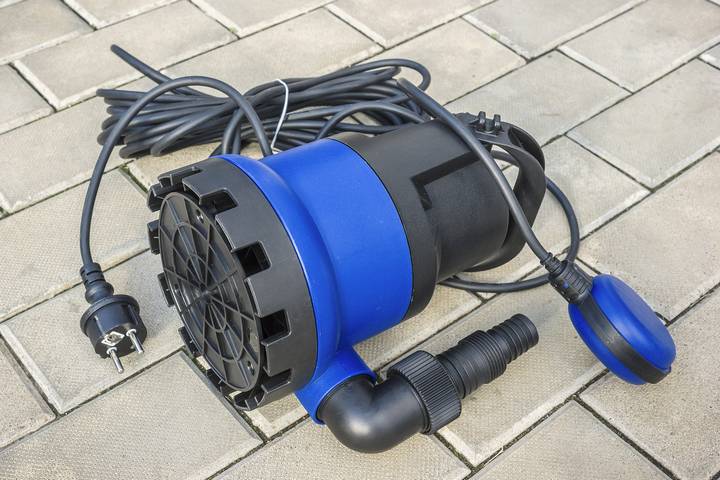 This pump is also known as a lift pump. People often confuse effluent pumps with sewage pumps, but they do a different job altogether.
This pump is also known as a lift pump. People often confuse effluent pumps with sewage pumps, but they do a different job altogether.
These pumps are used in homes with an effluent tank or basin. Effluent pumps differ from sewage pumps in that they remove wastewater, which collects from bathroom sinks, laundry sinks and showers. They then pump it into the leach field or effluent dispersal area. Once installed, these pumps run automatically. They can either be installed into a separate pump chamber or the septic tank itself.
Effluent pumps must be maintained and repaired by a licensed plumber. This option isn’t for every home. Make sure you read the label when purchasing this fixture to avoid getting a pump that doesn’t fit your needs.
Generally, these pumps are very durable if well-maintained. Depending on how frequently the tank fills up, and how hard the effluent pump has to work when pushing gray water into the leach field, it can last for about 10 to 15 years. Once it comes to the end of its life, it’s better to replace rather than try to repair it.
Type #6: Combination Sump Pump
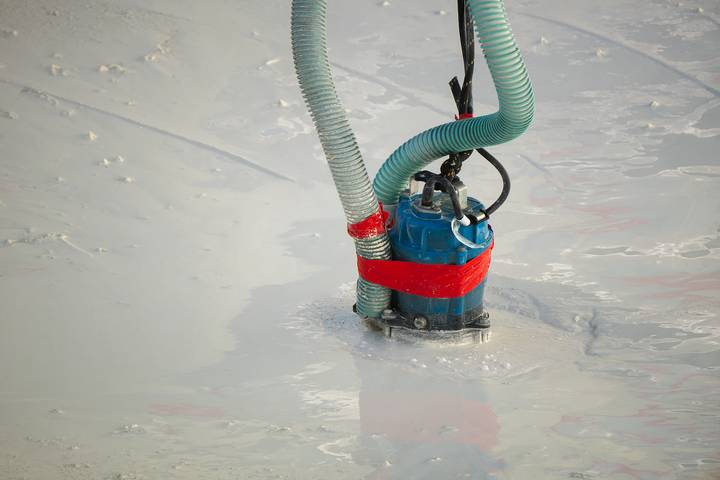 Combination sump pumps are the most reliable of the lot. They’re efficient and effective for the purpose of preventing flooding and water damage in homes.
Combination sump pumps are the most reliable of the lot. They’re efficient and effective for the purpose of preventing flooding and water damage in homes.
Combination sump pumps feature two pumps and two types of power sources. Primary pumping and power are supplied by the larger pump, and it runs off AC power. It’s advisable to check your combination sump pumps every six months, particularly during spring and fall when rainfall is heavy in temperate regions.
Do your research before buying a sump pump since each has its pros and cons. Purchasing one that doesn’t meet your needs is just as bad as not having one.

